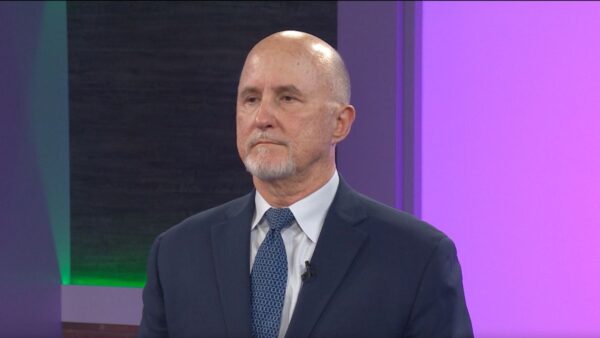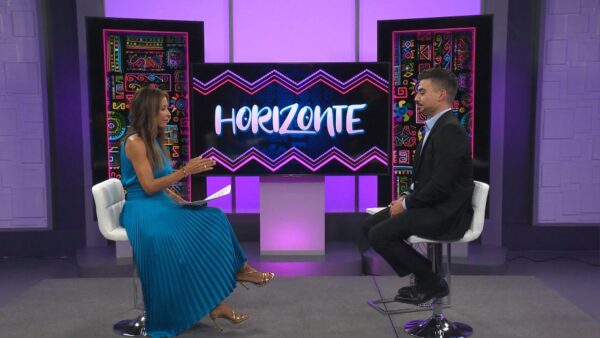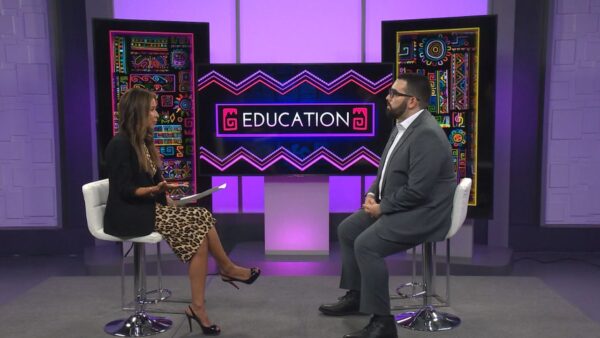In the late 19th century, the communities of San Pablo, Sotelo Ranch, Hayden’s Ferry made up what is now known as Tempe. Dr. Santos Vega, Author of “Around Miami” and “Mexicans in Tempe” , and Irene Gomez Hormell, long time Tempe resident, discuss Tempe’s Hispanic heritage.
Jose Cardenas: As Arizona's centennial approaches, "Horizonte" continues to look back at how Latinos have contributed to our state's history and culture. In the late 19th Century, the communities of Sotelo Ranch, San Pablo, and Hayden's Ferry made up what is now known as Tempe, Arizona. With me to talk about the history of Hispanics in Tempe is Dr. Santos Vega, author of "Mexicans in Tempe," and Irene Gomez Hormell, a longtime resident of Tempe.
Jose Cardenas: Thank you very much for joining us on "Horizonte."
Jose Cardenas: Dr. Vega, tell us in just a quick few sentences, the history of Tempe that's captured in the introduction you have to this book.
Dr. Santos Vega: This is a book that came out in '09 and tells the history of the Mexican in Tempe, from the pioneers to modern times and it gives them -- a history of the place, the people, activities, including the military and sports. And so that people get a rounded balanced perspective of Tempe from the beginning to where it is now. With a Mexican Americans as pioneers and later settlers and later at TEMPEANs in Tempe.
Jose Cardenas: It's a wonderful collection of photographs that you've accumulated through various resources.
Dr. Santos Vega: Yes, and I gave thanks to Irene who is a native of Tempe and I went to her and she's the one that donated many of these photographs.
Jose Cardenas: And we're going to look at some, but first, Irene, a part of this effort is attributable to a group you were involved in, Los Amigos in Tempe. Can you tell us about it.
Irene Gomez Hormell: Yes, we started as -- what happened, we were all children from the BARRIOS, our homes taken from eminent domain in the '50s, and we -- all of the families scattered, some moved to California and other states and then came to a wedding one year, my girlfriend's wedding, and what happened was we all met there and had such a beautiful feeling to see so many people and started asking about other families that were scattered and pretty soon it became -- we decided to make a committee, Los Amigos in Tempe.
Jose Cardenas: We showed a picture of your great grandmother and I think these are your grandparents, is that right?
Irene Gomez Hormell: Yes. That's my grandparents. Her name is Kate Jones. And her name was Kate Jones and married Jesus Gomez. His parents go back to the 16th century, when the Spaniards came to take over the territory.
Jose Cardenas: And you, yourself, come from a family of strong women engaged in business?
Irene Gomez Hormell: Yes, my maternal grandmother, and my mother, they were the SOTO family and my mother had her own little restaurant, Vickie's Place across the street from ASU. And my grandmother, she was a merchandiser, not door-to-door merchandiser. And that is a time we would take orders here and go to California, I used to be her translator and that's why I know a lot of the people in the BARRIOS because we used to go deliver her things.
Jose Cardenas: We have pictures of Tempe in the old days. What are we looking at here? Is this Mill Avenue?
Dr. Santos Vega: That's Mill Avenue. And it was not paved at that time. In fact, for many years, it was up paved because until the 1920s, after the automobiles started to come in, they began to pave the streets.
Jose Cardenas: And among the pictures and it may have flashed up and I missed it, but we had a picture of the flour mill, the Hayden Flour Mill, where your mother was one of the first women to work there.
Irene Gomez Hormell: My mother was the first Hispanic woman to be hired. First woman, period. And then being Hispanic meant a lot to us. But she also -- my step father also worked there. But the mill was like a skill center for all of the Hispanic people because Mr. Hayden did hire a lot of Mexicans.
Jose Cardenas: We've got the picture on the screen right now. That's the old mill, right?
Irene Gomez Hormell: It was like a skill center for all of the generations because there was -- there's families there from generation to generation.
Jose Cardenas: And another important center for the community, Dr. Vega, was the church. The Spanish Mexican families living there. And we have wonderful pictures of what was our Lady of Mount Carmel. That's a different church, isn't it?
Irene Gomez Hormell: This is Senora Mount Carmen, that's the first Mount Carmel church.
Jose Cardenas: And we've got a close-up of it and this is the same church with the congregation outside?
Irene Gomez Hormell: And those are the people that made that church become real.
Jose Cardenas: That church is no longer here.
Dr. Santos Vega: No. In fact--
Jose Cardenas: This one is, right?
Dr. Santos Vega: Yes.
Jose Cardenas: That's at the corner of College and University.
Dr. Santos Vega: At College and University. They built it there and actually, the church moved from closer to the Buttes and moved south to about the third time they built it, that's the one you see on College and University close to 1900. And the priest in charge of that was a German priest and back in his hometown in Germany, that's the type of architecture they had. And that's the architecture now on the church there is the German architecture.
Jose Cardenas: Dr. Vega, we've only got a few seconds left. We want to mention a new book you've got coming out. This is a similar book and has to do with the town of Miami.
Dr. Santos Vega: Yes, the history of Miami. A mining town. Because Miami, along with other mining towns in Arizona were very instrumental in developing the mining copper industry in Arizona. And this book will come out September 6th, and we'll be marketing that book here in our online web store.
Jose Cardenas: On that note, we're going to have to end our interview, but thank you both, Dr. Vega and Irene Gomez Hormell for joining us on Horizonte.
Jose Cardenas: That's it for us tonight. For all of us here at "Horizonte," I'm José Cárdenas. Have a good evening.
Santos Vegas, Dr:Author; Irene Gomez Hormell:Tempe resident;




















